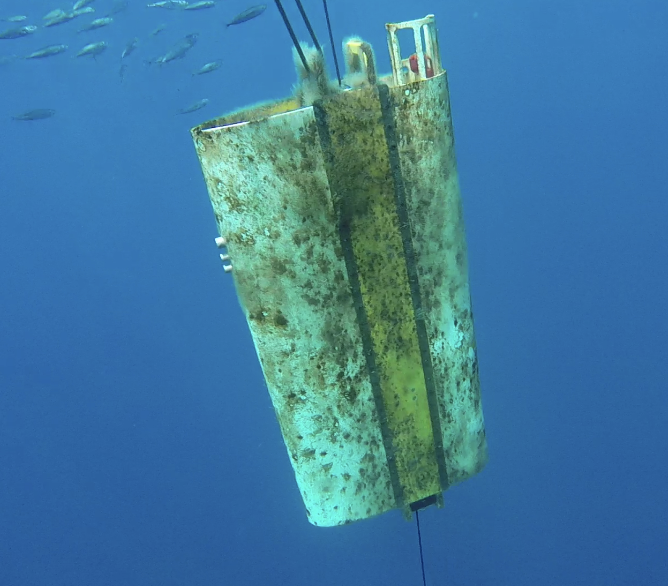The IbMa-CSV oceanographic station is located ten nautical miles south of Cape São Vicente, the SW tip of the Iberian Peninsula. It is moored at 200 m deep, over the continental shelf break. The IbMa-CSV station is a fundamental component of the EMSO ERIC Iberian Margin Regional Facility.
The upgrade of the IbMa-CSV station with hydrophones will enable the acquisition of acoustic data allowing for the characterization of ocean soundscapes, a fundamental step for determining ecosystem health and a strong proxy for biodiversity conservation. In addition, it will provide data for better detection, localisation and tracking of marine mammals at the convergence area of the Gulf of Cadiz and the North Atlantic, a region known as a cetaceans hot spot.
The proximity of the CSV region to one of the busiest ship Traffic Separation System (TSS) in Europe (connecting the Mediterranean to the north of Europe) indicates that this region is highly affected by noise produced by ships. In this sense, CINTAL objectives are (1) to monitor and quantify ship noise levels, (2) detect and locate cetaceans in the area, allowing for a detailed quantification and identification of the resident and passing by species, thus improving the common methods based solely on visual contacts.
The deployment of the new mooring at IbMa-CSV station was carried out on board of the vessel Hyperodon, from Mar Ilimitado, with members of IPMA and CINTAL, with CCMAR also taking part in the team. The IbMa-CSV station, jointly managed by IPMA and CCMAR, presently comprises a wave-powered vertical profiler (DMO Wirewalker), an ADCP, two landers equipped with a current meter and temperature sensor, and now five hydrophones.
During the deployment, the vertical profiler (DMO Wirewalker) was also serviced, extending its operational range to a 5 month target of continuous data acquisition of the water column upper 150m at the shelf break.

The IbMa-CSV station suitability for installing and testing equipment from outside EMSO demonstrates the observatory’s good conditions and excellent location. The natural evolution of the IbMa-CSV station is to remain in water a substantial part of the upcoming years, constructing a long-term time series of EOVs, now including acoustic data.
Fig. 1 – Preparation of the Acoustic Array mooring line before deployment
Fig. 2 – The vertical profiler before servicing
Authors:
Carlos Sousa1, Luciano Júnior3, Sara Magalhães4, Ricardo Silva4, Caio Ribeiro2, Paulo Relvas2, Sérgio Jesus3, A. Miguel Santos1
Affiliation/Institution:
1IPMA – Portuguese Institute for the Sea and Atmosphere
2 CCMAR (Centre of Marine Sciences) / University of Algarve, Portugal.
3 CINTAL – SipLab / University of Algarve, Portugal.
4 Mar Ilimitado, Lda., Portugal.


